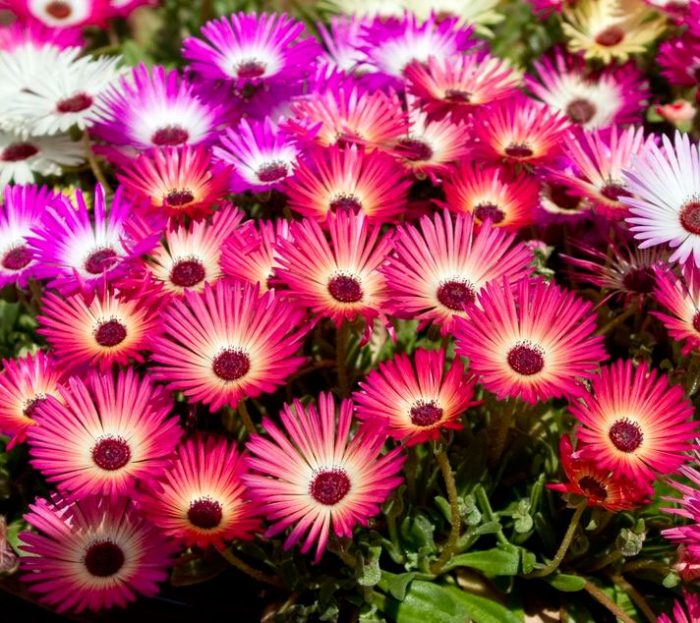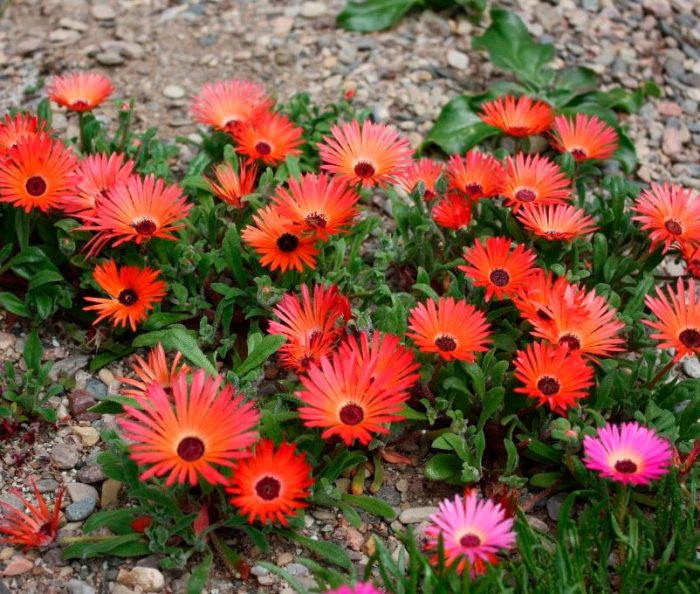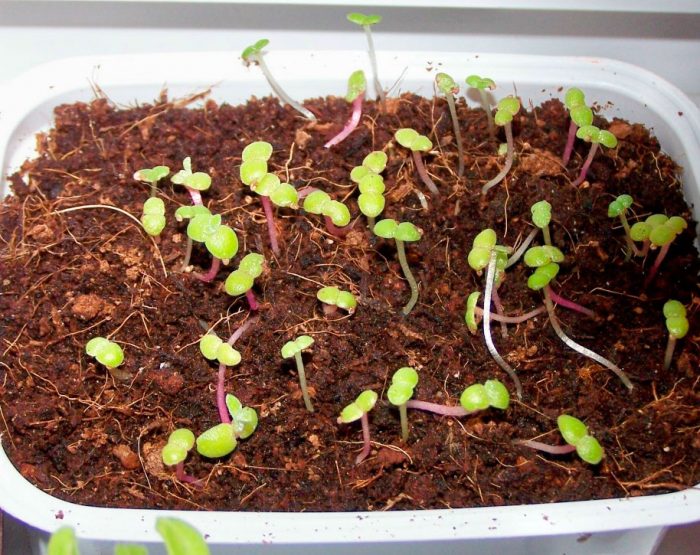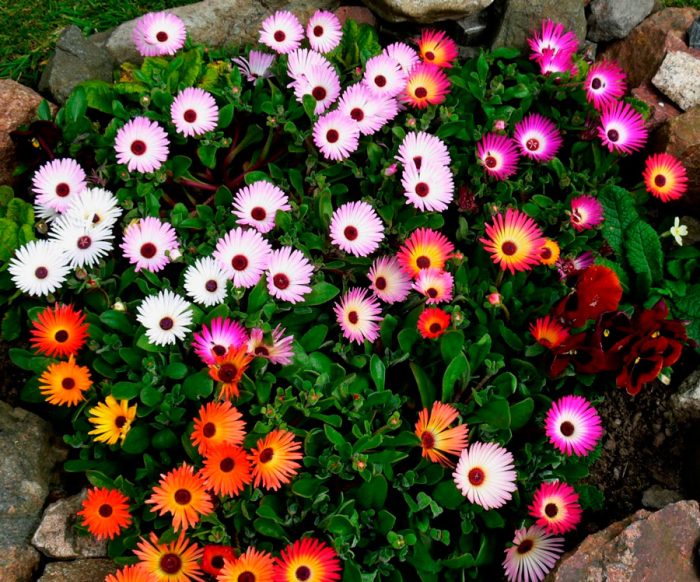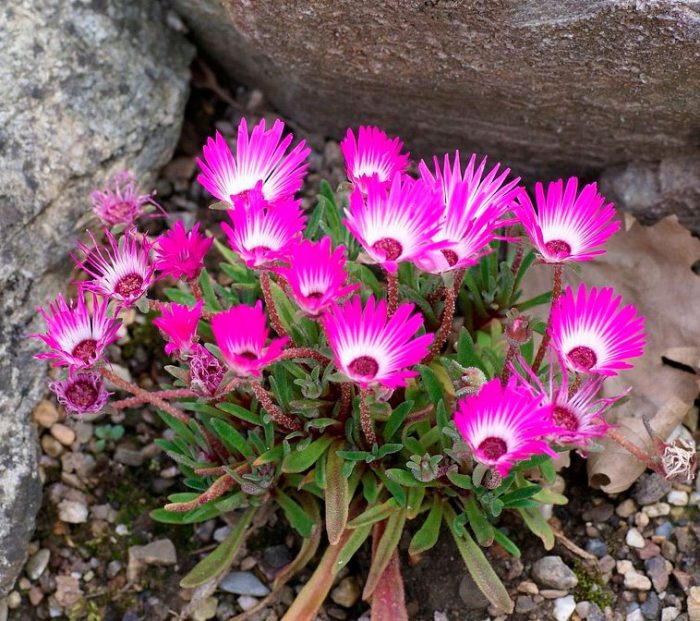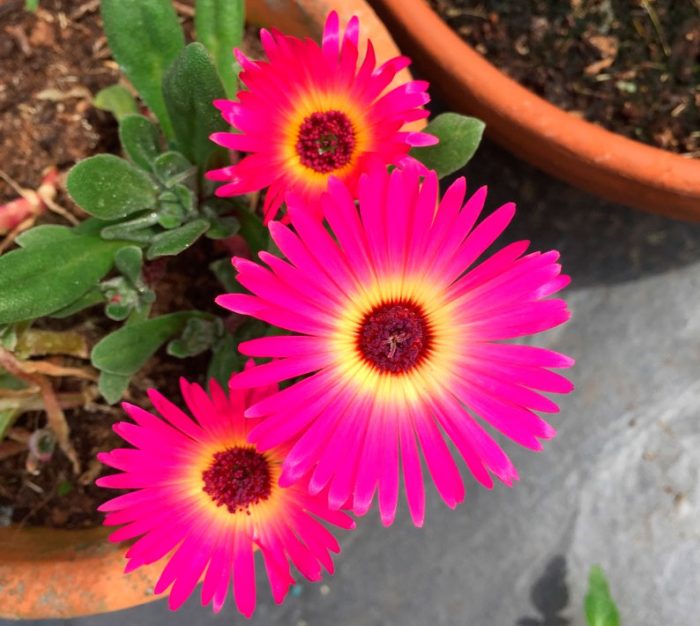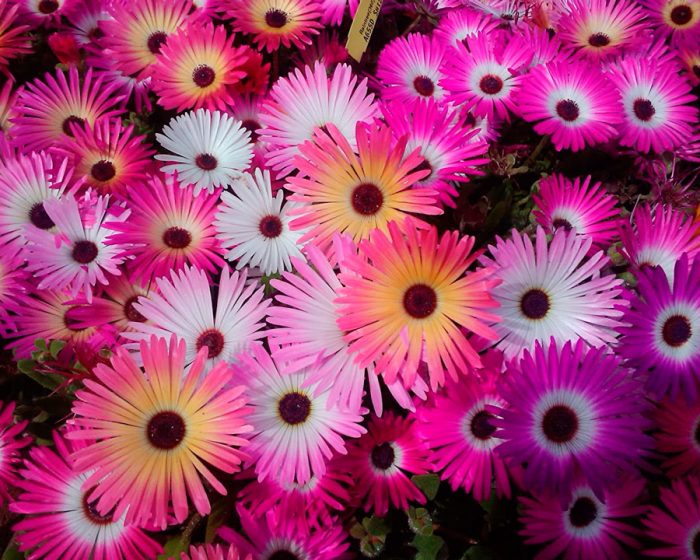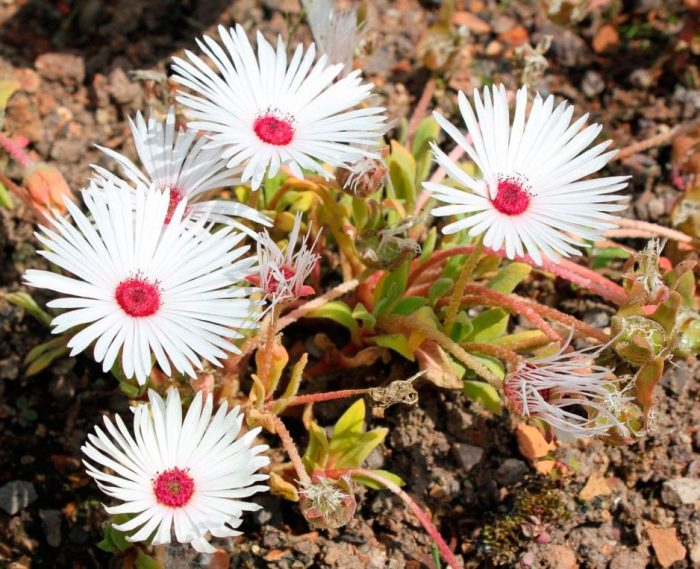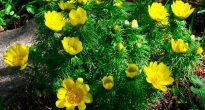The name of the plant, dorotheanthus, translated from Latin means "Dorothea's flower". It was named after Dorothea, who was the mother of the botanist G. Schwantes. Some of the species of such a plant are popularly called "crystal chamomile". The fact is that the surface of the foliage and shoots of this plant is covered with small hairs, the structure of which is glandular. Thanks to this, they effectively sparkle and shimmer in the sun, as if they were made of crystal.
Also, among the people, dorotheanthus is often called "midday". The thing is that the flowers of this plant fully open only at midday under the bright rays of the sun. And in the afternoon hours, they already begin to gradually close. On a cloudy day, when the bushes do not have enough light, the flowers often do not open at all.
This flower comes from the arid part of South Africa. That is why it is recommended to cultivate it in those regions where there is little rain, warmth and many fine days. Note that in extremely cold climates, the plant may die.
Content
Features of dorotheanthus
The perennial plant dorotheanthus is a succulent and part of the Aizaceae family. In mid-latitude gardens, it is grown as an annual, but in indoor culture it is cultivated as a perennial. This genus unites about two dozen different species.
The fibrous root system is buried 20–25 centimeters into the soil. The height of the bush can vary from 5 to 30 centimeters. Its creeping stems are rather fleshy. The foliage and stems are colored dark green or emerald. Shoots placed very close to each other form a dense carpet, intertwining with each other. Seated leaf plates have an oval shape, their thickness is from 20 to 30 millimeters. After watering or rain, the thickness of the leaves may increase, as moisture accumulates in them.
Outwardly, dorotheanthus flowers look like daisies or chamomile. They can be painted in various shades, for example: yellow, white, red and many others. Bushes grow from one bag of seeds, the flowers of which can be painted in a variety of colors (more than 12 shades). The lifespan of one flower is 2 days. After it fades, a new bud appears in its place.Large flowers reach about 50 mm in diameter. The duration of flowering is influenced by both the type and variety of the plant, and the characteristics of the climate in the region where it grows. As a rule, flowering begins in mid-July and ends in October or November. Flowering will be scarce on rainy and cool summers.
Growing dorotheanthus from seeds
After the flowers of the dorotheanthus wither, translucent capsules with rounded seeds are formed in their place. The seeds of such a succulent are very small: one gram contains about 3 thousand. They remain viable for a couple of years. If desired, sowing seeds can be carried out directly into open ground, and dorotheanthus can also be grown through seedlings.
Growing through seedlings
Sowing for seedlings is carried out in the last days of March or in the first days of April. In this case, when the time comes to transplant seedlings in open ground, they will already bloom. For sowing seeds, it is recommended to use large rectangular boxes. The soil mixture should be loose and light, while it can be mixed with sand and peat.
Level the surface of the substrate and distribute the seeds evenly over it. You do not need to bury them in the soil mixture or sprinkle them on top. Moisten the crops with a spray bottle and cover the top of the box with foil or glass. The first seedlings should appear after 10-12 days.
During the first 20 days of growth, crops should be at room temperature. Then the seedlings are hardened. To do this, they are transferred to a cooler place with an air temperature of about 18 degrees, and then gradually reduce it to 10 degrees. When 3–3.5 weeks have passed from the moment the seedlings appear, it is recommended to pick them out in individual peat pots.
Watering the bushes should be very careful so that water droplets do not fall on foliage or shoots. In the last days of May, seedlings are planted in the garden, while you do not need to remove them from the pots. Please note that the distance between the bushes must be at least 20 centimeters.
Sowing seeds in the ground
If you have no desire to grow dorotheanthus through seedlings, then the seeds can be sown directly into the garden. They do this in the last days of April or in May. However, it should be borne in mind that such bushes will bloom much later than those that were grown through seedlings.
A place suitable for sowing should be well lit by the sun. The soil needs a loose and well-permeable air and water. Sand can be added to the soil to improve the structure. Dorotheanthus grows well on loams. The fertility of the soil does not really matter.
Since the seed is very small, it is recommended to mix it with a small amount of sand before sowing. The seeds are buried into the soil by 10–20 millimeters, while the row spacing should be from 15 to 20 centimeters. Almost immediately after the seedlings appear, start weeding them, while absolutely all weeds must be removed, even small ones. Simultaneously carry out the thinning of the seedlings; a distance of 30–40 mm is maintained between them. After some time, young plants are thinned out again, this time between them a distance of 70 to 80 mm is left. After the bushes grow up and get stronger, they can be planted in a permanent place, in this case, the distance between them should be 15–20 centimeters.
Dorotheanthus care
Fertilizer
Dorotheanthus, undemanding in care, is quite easy to grow on your site. There is no need to feed him. The fact is that in their homeland in Africa, where prolonged drought is not uncommon, the plant's root system obtains the necessary nutrients for itself.
Temperature
This culture is distinguished by its thermophilicity. Even slight frosts can destroy it. The flower feels best at temperatures from 15 to 25 degrees.
Watering
It is necessary to moisten the soil moderately, and it is better to do this in the morning. In this case, at noon, when the sun is most active, the flower will not overheat. Also, watering in the evening can lead to stagnation of liquid in the roots of the plant. Even if the bushes wilted after a hot day, they should be watered only at the onset of the morning. Only seedlings recently planted in open ground need systematic watering.
Care features
In order for the dorotheanthus to grow and develop well, it should be provided with optimal conditions and systematic good care:
- for planting, you should choose a sunny area that should warm up well;
- watered moderately, making sure that the liquid does not stagnate in the root system (it can withstand a short drought);
- the soil should be light, air and water permeable;
- if there is a threat of frost, the bushes should be covered.
Also some tips from experienced gardeners:
- In order for the roots to receive a sufficient amount of oxygen, and rot does not appear on them, the soil surface around the bushes should be systematically loosened.
- In order for the bush to bloom for a long time and magnificently, it needs to be pruned from time to time.
- Dorotheanthus grows well at home, and it can also be cultivated as an ampelous plant.
Growing at home
Doroteanthus is suitable for growing both outdoors and at home. Seedlings grown for planting in open ground are not recommended to dive. Those seedlings that have been cut can be cultivated at home. Indoor dorotheanthus should try to create the same conditions that are ideal for growing this flower in the garden.
If you decide to decorate a balcony or loggia with this spectacular succulent, then choose a sunny place for it. The best option would be a balcony located on the south side. When grown at home in winter, dorotheanthus also needs a lot of light. If the plant does not have enough light, then it will not die, but it will not please you with its flowering.
Types and varieties of dorotheanthus with a photo
Dorotheanthus daisy (Dorotheanthus bellidiformis)
The recumbent stems of this species are decorated with narrow fleshy leaf plates. Flowers can be colored red, orange, pink or yellow.
The best varieties:
- Gelato Dark Pink... The flowers are painted in 2 colors: the inner petals are white and the outer ones are of cyclamen shade.
- Magic Carpet Meekfrom. The flowers have a double color, while the shades can be very different.
- Pastel mix... This variety is very popular with gardeners. Its flowers can be pale pink, lilac, white or yellow. The bushes grown from these seeds will delight you with lush bright flowering, while your garden will be decorated with a multi-colored spectacular carpet. The bushes are undersized, in this regard, it is enough to keep a distance of 10 centimeters between them.
- Cheerful round dance... The bushes of this variety reach a height of about 0.3 m. The flowers have a spectacular color: their middle is dark purple, and the petals, almost white at the base, gradually turn into a rich color to the tips.
- Yellow... The petals of the flowers of this variety are painted in a bright yellow color, while their centers are red.
Dorotheanthus oculatus (Dorotheanthus oculatus)
This species is quite rare in mid-latitude gardens. Strongly branching bushes are decorated with foliage, the length of which is about 4.5 cm, and the width is 1 cm. The middle of the flowers is necessarily painted in a rich shade, and their petals can be pink, white or red.
Dorotheanthus gramineus (Dorotheanthus gramineus)
The bush consists of strongly branching red and pale pink stems, and it reaches a height of about 10 centimeters. The elongated leaf plates are sedentary. In diameter, the flowers reach from 30 to 35 mm, their middle is pale red, and the petals can be painted in salmon, red or pink.
There are varieties whose flowers remain open even in the shade and late at night:
- Lunette - the middle of the flowers is brownish-red, and the petals are rich yellow;
- Lemonade - the petals have a gradient color, with orange and lemon shades prevailing;
- Northern Lights - flower petals are yellowish-green;
- Apricot pointe shoes - the petals are painted in one color;
- Magic carpet - pink flowers have a white strip around the middle.
Dorotheanthus apetalus (Dorotheanthus apetalus)
This species is dwarf, while it does not have lush foliage. It is rarely cultivated by gardeners.
Dorotheanthus in landscape design
The dorotheanthus plant looks great in rocky gardens and rock gardens. It is often sown to create a green carpet.
This flower can be grown both in the garden and in containers or pots, and in this case, it is recommended to plant 3 or 4 bushes at once in one container. Dorotheanthus looks great in a solo planting in the garden, it can also be planted in conjunction with other garden crops, which are already fading by mid-summer. Due to the fact that the flowers of such a plant can be painted in different colors, you can, if you wish, create an ornament in the garden or make bright accents in the right places.
It should be noted that this plant has one big drawback - its seeds are very difficult to find, even in specialized stores.


Watch this video on YouTube

